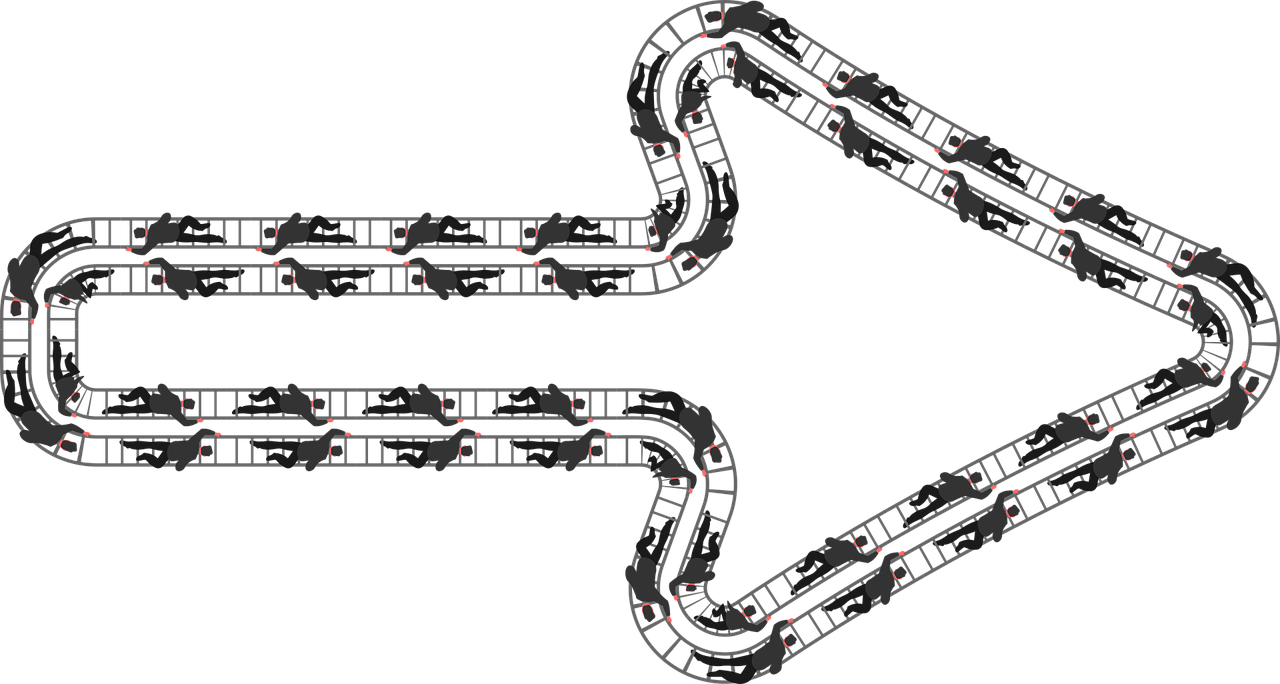How to improve your website’s crawlability
|
IN BRIEF
|
Improving your website’s crawlability is essential for enhancing your SEO performance and ensuring that your content is indexed effectively by search engines. By understanding how search engines navigate your site, you can implement key strategies to boost visibility and drive organic traffic. From optimizing your sitemaps to utilizing robots.txt files, there are numerous factors that contribute to a well-structured website that is easy for search engine bots to explore. Fostering an effective internal linking strategy further enhances user experience while promoting better indexing. By addressing common technical aspects, you can significantly improve your site’s crawlability and set a solid foundation for achieving higher search engine rankings.
Understanding Crawlability: How Search Engines Navigate Your Website
Crawlability is a crucial aspect of SEO that determines how effectively search engines can explore and index your website. By ensuring your website is easily navigable, you improve its chances of ranking higher in search results. Search engine bots, or crawlers, follow links on your site to discover new content. A well-structured website with a clear hierarchy of information allows these crawlers to efficiently understand and index your pages.
For example, a website with a logical menu structure and internal links enhances crawlability. In contrast, pages that are isolated or buried deep within the site may remain unnoticed by crawlers, resulting in lower visibility. Implementing tools like Google Search Console can help you monitor and analyze your site’s crawlability, ensuring that important pages are being indexed properly.
The Basics of Technical SEO for Website Owners
Technical SEO involves optimizing your website’s infrastructure to improve its performance in search engines. This includes elements such as website speed, mobile-friendliness, and secure connections (HTTPS). These technical aspects not only enhance search engine ranking but also improve user experience. Website owners should ensure their sites load quickly, as slow pages can lead to higher bounce rates.
Moreover, utilizing responsive design makes your site accessible on various devices, catering to a broader audience. Regularly auditing your website for technical issues plays a vital role in maintaining its health and ensuring it meets the evolving standards set by search engines.
How to Avoid Common SEO Mistakes
Common SEO mistakes can hinder your website’s performance and visibility. One frequent issue is keyword stuffing, where businesses overuse keywords in their content, making it look unnatural. Instead, focusing on high-quality, relevant content that naturally integrates keywords is more effective. Another mistake is neglecting meta tags and descriptions, which are essential for helping search engines understand what your pages are about.
Additionally, failing to monitor website analytics can lead to missed opportunities for improvement. By regularly reviewing metrics such as organic traffic and bounce rates, you can make informed adjustments to your strategy, ensuring ongoing success in the digital landscape.
Understanding Organic Traffic: Strategies to Boost Your Website Visibility
Organic traffic refers to visitors who arrive at your website through unpaid search results. To boost organic traffic, it is essential to focus on creating high-quality content that answers the needs and questions of your audience. Researching relevant keywords and incorporating them naturally into your content can significantly improve your visibility on search engines.
Moreover, engaging with your audience through blog posts, social media, and newsletters can help drive more users to your site. Building strong relationships and establishing your authority within your niche can enhance your brand’s visibility, ultimately increasing organic traffic. Consistency and quality in your content strategy are key to attracting and retaining visitors.
Understanding the Importance of Sitemaps for SEO
A sitemap is a vital tool in the SEO toolkit, as it provides search engines with a roadmap of your site. Sitemaps list all the critical pages, ensuring crawlers do not miss important content. By creating and submitting an XML sitemap to search engines, you enhance the likelihood of your pages being indexed quickly.
Additionally, sitemaps help search engines understand the structure of your website, which is crucial for determining page priority and relevance. Regularly updating your sitemap whenever new content is added is essential to maintain accurate indexing and support your SEO efforts.
Understanding the Role of robots.txt in Website Indexing
The robots.txt file plays a significant role in guiding search engines on how to interact with your website. This file tells crawlers which parts of your site should not be accessed or indexed. Utilizing robots.txt effectively can help protect sensitive information and reduce the chance of search engines wasting resources on unnecessary pages.
However, it is vital to use this file correctly; misconfiguring it can hinder important pages from being indexed. Regular checks on your robots.txt file ensure that it aligns with your indexing goals and that all critical content is discoverable by search engines.
The Importance of Internal Linking for SEO and User Experience
Internal linking is essential for both SEO and enhancing user experience. By creating hyperlinks within your content that lead to other relevant pages on your site, you help search engines understand the structure and context of your content. This not only aids in indexing but also encourages visitors to explore more of your website.
Strategically placed internal links can keep users engaged longer and reduce bounce rates, positively impacting your search rankings. Additionally, using descriptive anchor text enhances usability by providing context about the linked content, guiding users to find the information they are searching for. Maintaining a strong internal linking strategy is crucial for a successful website.
Understanding Crawlability: How Search Engines Navigate Your Website
Crawlability is a fundamental aspect of search engine optimization (SEO) that determines how easily search engines can access and understand the content on your website. Essentially, it refers to the ability of search engines like Google to crawl and index your site efficiently. Websites that possess strong crawlability are more likely to achieve higher rankings in search results. To enhance your site’s crawlability, it’s essential to ensure that there are no technical barriers that hinder search engines from following links or accessing content. For instance, implementing a well-structured sitemap can significantly facilitate this process by providing search engines with a roadmap of your site’s pages. Additionally, optimizing the robots.txt file is crucial as it informs the search engine which pages should or shouldn’t be crawled. Misconfigured settings in these areas can lead to critical omissions of your content from search engines, adversely affecting your site’s visibility.
The Basics of Technical SEO for Website Owners
Technical SEO comprises a variety of practices aimed at improving the technical aspects of a website to enhance its organic search rankings. It covers elements such as site speed, mobile-friendliness, and secure connections (HTTPS), all of which are vital for providing users with a seamless experience. Search engines prioritize sites that load quickly and are optimized for mobile devices, as these factors contribute to user satisfaction. Moreover, it’s essential for website owners to conduct regular audits to identify and rectify any technical issues, such as broken links or duplicate content, that may hinder performance. Investing in technical SEO can yield substantial dividends in terms of both search rankings and user engagement, making it a critical priority for any website seeking to grow its audience.
Avoiding Common SEO Mistakes
Understanding common SEO mistakes is essential for website owners who want to improve their online presence. One prevalent error is neglecting keyword research, which can lead to irrelevant content that doesn’t resonate with target audiences. Another frequent oversight is failing to optimize meta tags, such as title tags and descriptions, which are crucial for conveying the essence of the pages to search engines and users alike. Moreover, many site owners overlook the importance of quality content; simply having a volume of content without valuable insights will not drive organic traffic. Regularly refreshing old content and ensuring it adheres to the latest SEO practices can also fall victim to short-term thinking. Being aware of these pitfalls equips website owners with the knowledge to create a more effective and dynamic online strategy.
Understanding Organic Traffic: Strategies to Boost Your Website Visibility
Organic traffic refers to visitors who land on your website through unpaid search results. To improve your organic traffic, it’s vital to create high-quality, relevant content that addresses user needs and queries. Implementing a solid content marketing strategy that includes optimizing for relevant keywords can help attract and retain visitors. Additionally, leveraging social media platforms to share your content can drive more traffic back to your site. Furthermore, fostering user engagement through blog comments and discussions not only helps build a community but also signals to search engines that your content is relevant and valuable. Consistent application of these strategies can significantly enhance your site’s overall visibility, paving the way for sustained organic growth.
The Importance of Sitemaps for SEO
Sitemaps play a crucial role in guiding search engines to navigate and index your website effectively. By providing a structured overview of your site’s content, sitemaps help search engines understand the priority of various pages and their relationship to one another. This is particularly beneficial for larger websites with numerous pages or complex structures. Submitting your sitemap to search engines ensures that new content is indexed promptly, which can lead to faster visibility in search results. Keeping your sitemap updated as you add or remove content is essential, as outdated sitemaps can result in missed pages that users may be searching for, ultimately affecting your site’s performance.
Understanding the Role of Robots.txt in Website Indexing
The robots.txt file is an integral part of a website’s SEO strategy, serving as a communication tool between your site and search engines. This file dictates which pages search engines are permitted to visit and index. While it’s useful for preventing the indexing of certain sections of your website, improper use of robots.txt can inadvertently block search engines from accessing essential content, leading to decreased visibility. It’s crucial to review and configure this file carefully to strike a balance between protecting sensitive information and ensuring search engines can crawl and index key pages.
The Importance of Internal Linking for SEO and User Experience
Internal linking is a powerful, yet often overlooked, aspect of both SEO and user experience. By strategically linking to other pages within your site, you help search engines discover and index content more efficiently while also guiding users through their journey. This practice not only enhances site navigation but also improves the overall time users spend on your site, contributing positively to SEO metrics. It’s important to create a well-thought-out internal linking structure that connects related content and drives users toward valuable information, thereby fostering a more engaging and interactive experience.
Understanding Crawlability: Navigating Your Website
The Basics of Technical SEO for Website Owners
To effectively enhance a website’s crawlability, it is crucial to grasp the fundamentals of technical SEO. This involves ensuring that your site is well-structured and that search engines can easily locate and index your content. A well-organized website with clear navigation allows search engines to follow links and discover pages without hindrance.
One essential tool for improving crawlability is the creation and maintenance of sitemaps. These files provide a roadmap of your website, helping search engines understand the layout and prioritize which pages to crawl. Additionally, employing a well-configured robots.txt file is vital, as it instructs search engines on which pages to index and which ones to avoid, significantly impacting your site’s visibility in search results.
- Ensure the website is mobile-friendly to boost both user experience and search engine ranking.
- Regularly update your content to keep it fresh and engaging, encouraging more frequent crawls by search engines.
- Implement internal linking strategies to enhance navigation and retain users on your site longer.
- Identify and rectify common SEO mistakes, such as broken links, missing alt texts, and poor meta descriptions.
To additionally enhance your site’s performance, leverage analytics tools to monitor user behavior and pinpoint areas for improvement. With a clear understanding of these facets of technical SEO, website owners can significantly increase their site’s visibility and drive greater organic traffic.
Understanding Crawlability: How Search Engines Navigate Your Website
The concept of crawlability is crucial for any website owner. Crawlability refers to how well search engine bots can navigate and index your site. It serves as the foundation for effective SEO strategies. To ensure that search engines journey through your website smoothly, it is essential to focus on aspects like sitemaps and robots.txt files, which guide bots in understanding the structure of your site.
The Basics of Technical SEO for Website Owners
Technical SEO is the backbone of optimizing your website for search engines. Understanding the basics of technical SEO enables you to enhance elements like site speed, mobile responsiveness, and structured data, all of which contribute to improved crawlability and ranking on search engine results pages (SERPs).
Avoiding Common SEO Mistakes
In the landscape of SEO, avoiding common pitfalls is paramount for success. Many website owners overlook crucial components that can negatively affect their rankings. By educating yourself around issues such as website architecture and internal linking, you can sidestep these blunders and create a more search engine-friendly site.
Understanding Organic Traffic: Strategies to Boost Your Website Visibility
Driving organic traffic to your site involves implementing effective strategies that enhance visibility. Gaining insights from organic traffic strategies can provide actionable steps to improve your site’s rankings, ultimately leading to increased visitors and engagement.
The Importance of Sitemaps for SEO
Sitemaps play a critical role in SEO by providing search engines with a roadmap of your website’s structure. This simplification allows for effective crawling, ensuring your pages are indexed correctly. For more detailed information, check out the article on the importance of sitemaps for SEO.
The Role of Robots.txt in Website Indexing
Your robots.txt file is vital for guiding search engines on which pages to crawl and which to ignore. By strategically configuring this text file, you can manage crawler access and protect sensitive information. More insights into this can be found by exploring the role of robots.txt in website indexing.
The Importance of Internal Linking for SEO and User Experience
Establishing a strong network through internal linking not only enhances user experience but also boosts your site’s overall SEO performance. By creating links between relevant pages, you help search engines understand the context of your content while providing users with easy navigation options.
Improving Your Website’s Crawlability
Understanding crawlability is essential for optimizing your website’s presence on search engines. By implementing fundamental principles of technical SEO, website owners can ensure that their content is accessible and indexable. One of the critical steps in this process is creating an effective sitemap, which provides search engines with a structured overview of your site’s pages. Additionally, utilizing robots.txt files can guide crawlers on which pages to prioritize, enhancing the efficiency of the indexing process.
To further enhance organic traffic, avoiding common SEO mistakes—such as neglecting proper site structure or ignoring internal linking—can significantly impact visibility. Internal linking not only aids search engines in navigating your site but also improves user experience, encouraging visitors to engage with more content. By focusing on these strategies, businesses can effectively increase their online presence and reach their target audience more effectively.













Post Comment